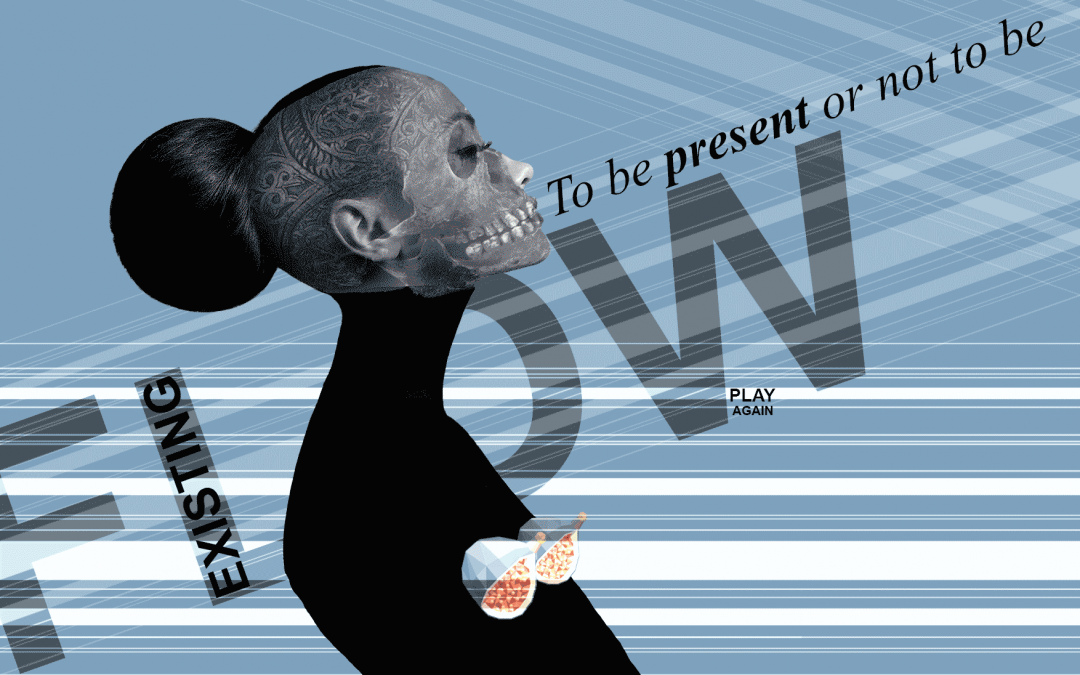4th article in a series aimed at defining, delimiting and organizing the concepts of attention, immersion, involvement, engagement, flow and presence. This 4th article deals with the concepts of presence and flow.
The other articles in the series:
- Article 1 presenting the context of this research
- Article 2 dealing with attention and immersion
- Article 3 dealing with implication and engagement
Preamble
This series of 5 articles includes part of the research article entitled “Defining Engagement and Characterizing Engaged-Behaviors in Digital Gaming” that I published in the journal Simulation & Gaming (Bouvier et al., 2014). You will find the reference at the end of the article.
Please note that while these articles have a video game dimension (playful or serious), the suggestions are also applicable to other technological and social activities such as virtual reality.
The sense of presence
To be present or not to be
The sense of presence is a crucial phenomenon in the field of virtual reality. Indeed, a user who feels present in the virtual environment will have responses and reactions (physiological, behavioural, emotional, intellectual, ethical) that are similar (in intensity and quality) whether the environment and situation are real or virtual (Sanchez-Vivez and Slater, 2005). This explains why virtual reality has been used for many years to treat phobias and personality disorders.
Since the development of headsets available to the general public, such as the Oculus Rift or HTC Vive, many newspaper and blog articles have promised players a new gaming experience. Most articles just talk about an immersive experience that’s new, extraordinary, amazing, etc. For now, few articles (perhaps the best?) are mentioning presence, as for example this interview with Jenova Chen on ETR.
Definition
Several attempts have been made to define the sense of presence. The most classic are the feeling of “being there in the virtual environment “ (Slater and Usoh, 1993) or a “perceptual illusion of non-mediation” by Lombard and Ditton (1997). More recently, Slater (2009) suggested to consider presence as the combination of the “place illusion” which refers to the idea of being there, and the “plausibility illusion” of the described situation.
During my Ph.D (Bouvier, 2009), I suggested to define the sense of presence as
The authentic feeling of existing in a world other than the physical world in which the body is.
The term feeling emphasises that presence is a subjective experience that is consciously experienced and is dependent on user’s internal and external factors (like any feeling). Moreover, although aware of the virtual nature of the situation, the user who is “present” feels a real and sincere (authentic) feeling of existing in the virtual world.
The notion of existing (and not just being there) includes both the classic idea of moving and acting in the virtual environment and, most importantly, the innovative idea that the user must embody a role. This role may be the one planned for the activity or another role that is independently chosen by the user.
To go further
Embodying a role requires the feeling of being at the initiative of one’s actions in order to feel responsible for them.It also requires to be aware of the consequences of one’s actions on the virtual environment and situation. And thus, embody not just the virtual body but also the role, in order to adopt a behaviour similar to that which one would have in reality. Tending towards the sense of presence is therefore particularly important in the context of virtual reality training, for example in aviation or medicine. In this way, the sense of presence is neither a simple emotional response (“I was afraid “) nor just a feeling of being there in the virtual environment (“I was there“).
Flow
The optimal experience in action
Csikszentmihalyi (1991) first defined the concept of flow as “the optimal experience“, i.e. “a mental state of intense concentration in which a person is completely absorbed in her/his task and the situation“.
Flow comes from the balance between the user or player’s skills and the challenges that are presented to her/him. If the challenge is too difficult, inaccessible relative to the player’s skills, then the activity may generate anxiety. On the other hand, if the challenge is too easy, then the activity may create boredom. But, if the activity strikes a balance between the challenge offered and the player’s skills, then the activity will generate flow. This will result in a feeling of pleasure, accomplishment and total control, and will be accompanied by a loss of the notion of time.
It’s a state that video game developers try to create for their players. To do this, it is necessary to detect the player’s level (her/his skills) in order to offer new challenges that are increasingly difficult but yet remain just within reach, so as not to create discouragement.
Flow can also be felt, among other things, during a sporting or musical activity, when the athlete’s body or the violinist’s bow becomes the direct relay of her/his intentions or emotions. And you, do you think you’ve already experienced flow, in video games or elsewhere?
Bibliography
Bouvier, P., Lavoué, E., & Sehaba, K. (2014). “Defining Engagement and Characterizing Engaged-Behaviors in Digital Gaming.” Simulation & Gaming, 45, 4-5, 491-507. PDF
Bouvier, P. “La présence en réalité virtuelle, une approche centrée utilisateur.” Thèse de doctorat, Université Paris-Est, France, 2009. PDF
Csikszentmihalyi, M. (1991). Flow: The psychology of optimal experience. New York, NY: Harper Perennial.
Lombard, M., & Ditton, T. (1997). “At the heart of it all: The concept of presence.” Journal of Computer-Mediated Communication, 3 (2).
Sanchez-Vives, M. V., & Slater, M. (2005). “From presence to consciousness through virtual reality.” Nature Reviews Neuroscience, 6, 332-339.
Slater, M. (2009). “Place illusion and plausibility can lead to realistic behaviour in immersive virtual environments.” Philosophical Transactions of the Royal Society B: Biological Sciences, 364, 3549-3557.
Slater, M., & Usoh, M. (1993). “Presence in immersive virtual environments.” In Proceedings of IEEE Virtual Reality Annual International Symposium (pp. 90-96).
Graduated with a PhD in Computer Science in 2009, I have been immersed in virtual reality for more than 15 years. Passionate about the user experience, I like to explore new technologies and new uses to develop with my colleagues in production and marketing, vivid and effective products for more engaging experiences.




